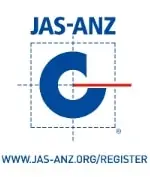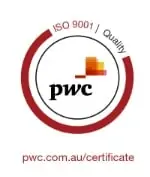The Power of Integration: Exploring the Concept of an Integrated Management System
Published on: July 26, 2023
If you’re in the process of certifying your business to multiple ISO Management System Standards, or if you’re looking to expand your existing business certification to encompass additional standards, you may have come across the term “Integrated Management System” during your research. If you haven’t yet, you’ll learn all about it in this article.
In the world of business, success often hinges on finding the perfect balance between efficiency, effectiveness, compliance, and continual improvement. As entrepreneurs and managers, we strive to unlock the secrets of streamlined operations, ensuring that every aspect of our organisation aligns flawlessly.
When implementing multiple ISO Management System Standards, these alignments can be challenging and you may find yourself creating duplicates, resulting in an administrative burden. However, there is a solution to seamlessly integrate multiple ISO Management System Standards, enhancing performance, and elevating your business to new heights.
Keep reading to gain a comprehensive understanding of the implementation of an Integrated Management System, as well as the benefits you may notice when adopting this approach.
What is an Integrated Management System?
An Integrated Management System (IMS) is designed to integrate all systems in place within an organisation. That way, the organisation can work as a singular unit towards the same goals, increasing efficiency and productivity within different teams. If you’re in the process of becoming certified, or are currently certified, to two or more ISO Management System Standards, taking an integrated approach is highly advisable.
To provide further context, when we talk about an Integrated Management System, it means that you don’t need to create separate management systems to meet the requirements of each individual ISO Standard. Rather, you can create one management system for your organisation which integrates the requirements of the standards with your current operational practices, as well as with each other. This is possible by building the management system around your existing business processes, and not by the clauses of the standards.
For example, you should have a single management system that will meet the requirements of ISO 9001, ISO 14001, ISO 45001 and ISO 27001. You should not have a separate Quality Management System, Environmental Management System, Health & Safety Management System and Information Security Management System. There are many overlapping requirements across the four main ISO Standards we’re referring to here, and it just doesn’t make sense to have some information repeated up to 4 times across separate systems.
Organisations often view their systems as separate units, leading to unforeseen conflicts that hinder productivity and efficiency. Integrating management systems unifies teams, transforming them into a cohesive unit. Consolidating information and processes into a singular system brings numerous benefits, such as heightened efficiency, increased productivity, reduced overhead costs, and superior advantages over running parallel individual systems.
What is a Management System?
A Management System is a set of interrelated and interacting elements of an organisation to establish policies and objectives, and processes to achieve the objectives. The documented information of a Management System generally comprises policies, processes, procedures and templates that define how a business is managed and operated towards achieving its goals. Read more about it here.
Why take an Integrated approach to a Business Management System?
In addition to reaping the individual benefits offered by each ISO Management System Standard, an IMS provides the advantage of a more cohesive and streamlined system, integrating tools and processes for easier management.
Working with fragmented systems often results in communication challenges, inefficiencies in time and cost due to duplicated work and information across departments, and even a negative impact on employee morale due to a lack of aligned objectives.
By adopting a holistic approach with an IMS, an organisation can collaboratively pursue unified goals, saving valuable time and resources, and enhancing efficiency by eliminating the frustrations associated with managing distinct processes for each discipline covered by the management system.
For instance, through an integrated approach, a single Risk Management Process can encompass various aspects related to all standards. This approach promotes consistency across different topics, allowing for a streamlined and harmonised approach. The benefits of integration can similarly be applied to Training, Internal Audit, Management Review, Issues Management, and Continual Improvement processes.
The benefits of using an IMS don’t end there. Here are more benefits that organisations may experience by adopting an IMS:
Did you know?
There is an official ISO Handbook on “The Integrated Use of Management System Standards”.
The handbook is comprised of three chapters:
- Chapter 1 – Fundamentals of a management system and how it links an organisation’s strategies, plans, and operations.
- Chapter 2 – Structure and contents of different management system standards and their application.
- Chapter 3 – How an organisation integrates the requirements of multiple management system standards into their management system.
If you’re embarking on integrating previously separate systems in your business, or developing an integrated system for the first time, this handbook will come in useful.
Implementing an Integrated Management System with multiple ISO Management System Standards
As mentioned earlier, the most popular ISO Management System Standards have some similar and overlapping requirements that can be integrated into a single system.
ISO 9001:2015 for Quality, ISO 45001:2018 for Health & Safety, and ISO 14001:2015 for Environmental Management are commonly integrated into a single management system due to their overlapping requirements. These standards serve as benchmarks for various industries, prompting the need for an integrated approach. While the ISO 27001:2022 Information Security Management System Standard and other management system standards are less commonly integrated, it’s important to note that they can also be incorporated into a single management system.
Implementing an Integrated Management System (IMS) provides a cost-effective solution for efficiently meeting the requirements of multiple ISO Management System Standards. You have the flexibility to develop your integrated system as a whole or in stages when adding new standards. For instance, if your business is already certified to two ISO Management System Standards and plans to pursue certification to a third standard in the future, it can and should be integrated into your existing management system.
An IMS also allows you to easily extend the scope of your ISO Management System and its Certification(s) to encompass multiple brands, branches, and locations under the same business group. This extension and integration can apply to parts of the business that were not initially covered during the development of the management system, eliminating the need for separate systems for each brand or branch.
Extending the scope of your Integrated Management System can be done at any point during the three-year certification cycle. You can opt for scope extensions during scheduled annual surveillance or re-certification audits. Alternatively, a dedicated scope extension audit can be conducted if you prefer not to wait until the next scheduled audit. You just need to coordinate and communicate these changes with your chosen Certification Body.
________________________________
Developing or upgrading a management system to meet the requirements of multiple ISO Management System Standards can be a challenging and complex task for organisations of any size and industry.
Mastering the intricacies of integrating multiple ISO Management System Standards demands meticulous planning and execution. Each standard carries its own unique set of requirements, making it crucial to ensure a comprehensive understanding of their interconnections. Failure to do so can result in prolonged implementation timelines, excessive investments, and potential non-compliance issues that put your hard-earned certifications at risk.
This is where our upcoming ISO training courses will help! Coming early next year, ICExperts Academy will be releasing four brand new ISO training courses. They will cover the foundations of ISO 9001:2015 for Quality, ISO 14001:2015 for Environmental, ISO 45001:2018 for Health & Safety, and ISO 27001:2015 for Information Security. These courses will provide you with a deeper understanding of the Standards, helping you with the development and improvement of your Management System.
Want to be the first to find out when they’re released? Register your interest here! You’ll receive all the updates and release information right to your inbox.
Erica is the Managing Director of ISO Certification Experts and ICExperts Academy. She has been helping businesses with their ISO Certification needs for over 20 years. Erica is also a Certified trainer, implementer and auditor for ISO 9001, ISO 14001, ISO 45001 and ISO 27001 standards. Erica primarily heads up the day-to-day operations of the businesses, and is also a current member of the Australian Organisation for Quality and Brand Integrity Committee.
All information on this blog site is for informational purposes only. As this information is based on our professional experience, opinion, and knowledge, we make no representations as to the suitability of this information for your individual business circumstances. Especiality Pty Ltd trading as ICExperts Academy and all related businesses and brands will not be liable for any errors, omissions, legal disputes or any damage arising from its display or use. All information is provided as is, with no warranties and confers no rights.
We will not be responsible for any material that is found at the end of links that we may post on this blog site. The advice, ideas, and strategies should never be used without first assessing your own personal business situation or seeking professional and/or legal advice. Information may also change from time to time to suit industry and business needs, requirements and trends.


















